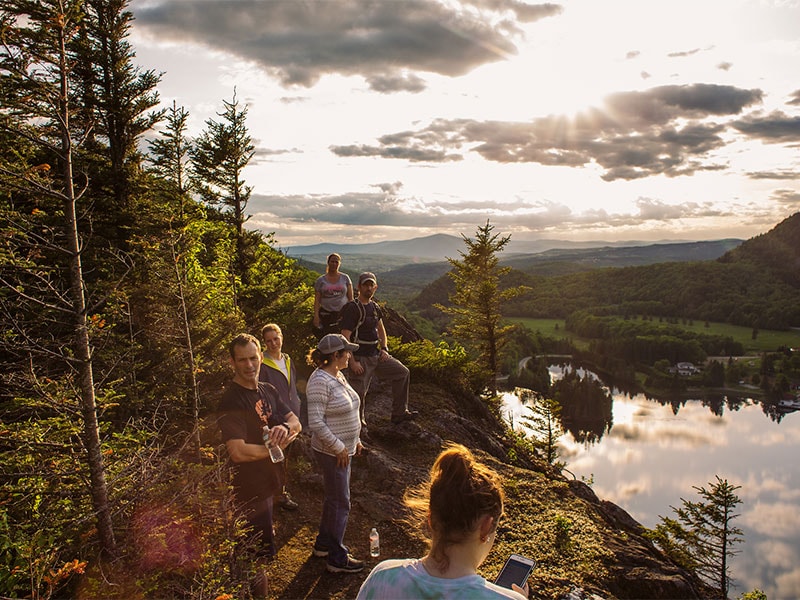
An effective method of forming a love for nature
Summer is the time for recreation and tourism. You don’t have to go abroad, you can have a rest in your home country. In recent years, domestic eco-tourism has aroused great interest among travelers. The country is a large, unexplored corners and places very much.
Acting Minister of Ecology, Nature Management and Forestry of the Republic of Sakhmin Afanasiev tells us about the situation with this type of recreation and the prospects for its development in Yakutia.
What does ecotourism mean to you?
For me, eco-tourism is not an invasion of nature by the crowds of destroyers or the construction of five-star hotels. An important principle of ecotourism is to contemplate nature from the inside, but without affecting it.
Ecological tourism is, first of all, an effective method that can instill in people love for nature, the desire to join its secrets, the desire to preserve its beauty. Besides, with the right organization, it is an opportunity to balance the interests of nature protection, economic and social interests.
Tourist activities make it possible to continuously improve the infrastructure, thus ensuring the accessibility of natural monuments and extremely beautiful places, visually promoting the preservation of wildlife and healthy lifestyles.
An important factor in the development of the tourism industry worldwide is the level of government support for this sector of the national economy.
Which specially protected natural areas of Yakutia should be developed for ecotourism and what does it give to protected areas?
The main category of the republic’s protected areas contributing to the development of eco-tourism are Natural Parks, with a total of six natural parks, including Lena Pillars in Khangalassky ulus, Momsky in Momsky ulus, Ust-Vilyuisky in Kobyaisky ulus, Living diamonds of Yakutia in Mirny ulus, Kolyma in Srednekolymsky ulus, and Sinyaya in the Mountainous ulus.
According to statistics, the dynamics of ecotourism development in the republic remains positive.
Lena Pillars Nature Park has become very popular not only among foreign tourists, but also among Yakutsk residents in recent years. How does this affect the financing of the park and its ecology?
Yes, indeed, there is a noticeable increase in interest in the tourist attractions of the Lena Pillars Nature Park, not only in the local and Russian society, but also in the international community. At the same time, inclusion in the UNESCO list also imposes additional obligations to ensure the preservation of the territory and environmental education activities.
At present, ecotourism in the territory of the Natural Park is carried out in specially designated areas on strictly approved routes. They are developed taking into account the recreational load. Currently, the territory of the Natural Park is visited by more than 14 thousand people per year with a design capacity of 35 thousand people per year.

In the future, with the full realization of the existing potential and construction of the appropriate infrastructure, the recreational capacity of the Lena Pillars Nature Park may grow twice, i.e. up to 70,000 people per year, which amounts to 14 to 24.5 million rubles of extra-budgetary funds.
On these hot days, the main stream of holidaymakers seeks to get to favorite places of rest such as Buluus, Elanka. As it is now with the environmental component, visitors were often able to hear complaints about the abundance of garbage and crowding.
With the popularization of eco-tourism, the anthropogenic load on these territories also increases. It is not the scale of tourism or the motivation of travellers that is really important for nature protection, but the impact of their travel.
This is primarily determined by the way the journey is organized. Ten visitors can cause more harm than a hundred if their route is not properly planned and organized.
In the areas of the abovementioned natural sites, ecotourism is currently organized by local tourism companies, which in turn ensure the improvement of these areas, including garbage collection.
Tourists who come for a few days, pay fees for visits to specially equipped eco-trails, do not cause significant damage and provide income for the improvement and cleaning of areas, as well as self-employment of local residents.
In recent years, the development of tourism in the Arctic regions has often been talked about. What kind of work is being done in this direction?
The Arctic specially protected natural areas of the Republic of Sakha (Yakutia) have a special place in the protected areas system of the republic. In recent years, in order to form a unified Arctic network of specially protected natural areas along the Arctic coast of the republic, three local resource reserves were established in 2013.
Work is underway to improve the status of a number of protected areas. For example, a significant part of the Novosibirsk Islands Archipelago has become a part of the newly established Novosibirsk Islands State Nature Reserve of federal significance.
The Bear Islands State Natural Reserve of Republican Importance has been included in the Plan of Implementation of the Concept of Development of Specially Protected Natural Areas of the Russian Federation until 2020 and will be transformed into the State Natural Reserve.
The State Nature Reserve “Kytalyk” in Allaikhovsky district may be transformed into a National Park in the future.
Of course, all these projects can be interesting for tourists. But, as you know, the remoteness of these areas does not allow to develop mass tourism and is rather spontaneous in nature.
